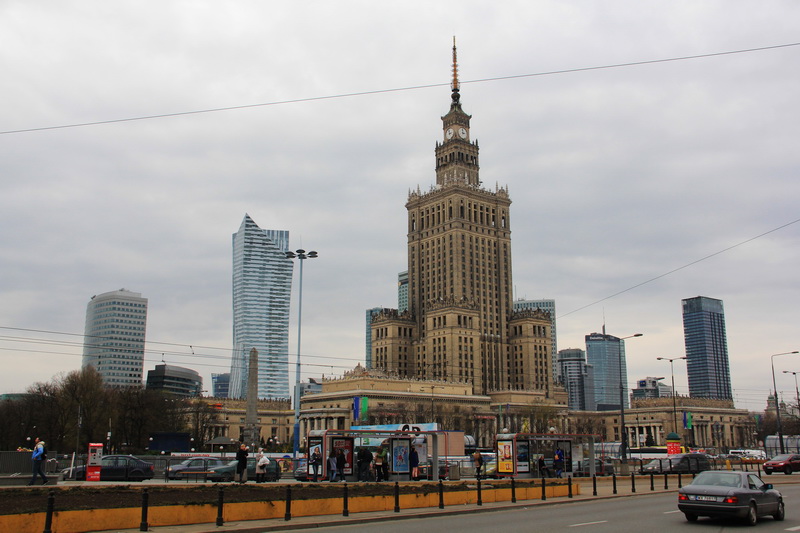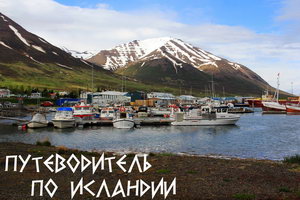We have been living in Poland for 4 months, but we have only reached the capital now. So we have 1.5 days of free time and the whole of Warsaw is in front of us.
In fact, it turned out that we only have one day to explore the city center, since the second day of our stay in Warsaw was the anniversary of the disaster near Smolensk... and the whole center was busy with official events.
So we are in Warsaw, as usual we decided to use the help of couchsurfers and agreed to stay with the girl Olivia. She met us at the bus station, we stopped by and brought our things home and to the center.
The historical center of Warsaw is not very large, you can get around in a couple of hours by examining in detail, even lovers of antiquity will find only restored buildings here, because Warsaw was almost completely destroyed in World War II. In order to understand how it was, we went to the MUZEUM WARSZAWSKIEJ PRAGI (ul. Targowa 50/52). The ticket costs only 2 zlotys, but there are no special attractions in it, mostly photos - and they are worth seeing.
Only then will you understand from what state Warsaw was restored.

We started our journey from the Palace of Culture and Science. The building is wonderful in every sense - it is a legacy of the Soviet past, a kind of classic Stalinist high-rise building, secondly, the building is surrounded by a number of skyscrapers and looks very interesting against their background. In general, they say that not all Poles love this building and even offer to demolish it... But as for me, it's just an interesting historical building that opens another page in the history of the city.
From the Palace of Culture we went out onto one of the main pedestrian streets of Warsaw - Krakow suburb. On this street there are the University of Warsaw, the Presidential Palace, the Radziwill Palace with an equestrian monument to Prince Jozef Poniatowski in front of it, the Church of the Holy Cross, in one of the columns of which an urn with the heart of Frederic Chopin is embedded. According to the will of the great composer, his body was buried in France, at the Pere Lachaise cemetery, and his heart was returned to his homeland.
Along the Krakow suburb, we soon reached the castle square, there are already more historical buildings and one of the hallmarks of Warsaw is the royal palace. From the outside, it looks quite modest, but they say the interior is very luxurious. However, we are not fans of looking at lavish interiors, so after taking a couple of photos we go deep into the old city.
Literally a couple of old quarters, churches on the sides of the street and we are on the market square.
The market square in Warsaw is small, but there are a lot of tourists on it all the time. Cafes are located along the buildings, and right in the middle of the square there is a sculpture of the Little Mermaid. The little Mermaid is a real symbol of Warsaw, it is depicted on the coat of arms of the city.

The Little Mermaid was installed in 1855 on the initiative of King Vladislav VI and is one of the oldest monuments in the city. If you go a little further, you can approach the old fortress walls and go out into the so-called new city. In the new town, however, there are also quite old buildings and there are many cozy cafes where you can taste traditional Polish cuisine at quite reasonable prices, especially when compared with prices in the Old Town and the Krakow suburb. So a pork leg (golonka) with potatoes and cabbage will cost about 8 euros. But the serving size is such that it is enough for two, especially if you take another hot beer with spices on a cool day, or cold craft beer on a hot summer day...
In general, we had a snack and went towards the house, and on the way we took some shots of the evening Warsaw.
The next day, as I already wrote, it was the anniversary of the tragedy near Smolensk and, on Olivia's advice, we went to the interactive museum of the Warsaw Uprising (Muzeum Powstania Warszawskiego, Grzybowska 79, admission 18zl, free on Sundays). I don't know if it was Sunday's fault or if it was always like that, but there were a lot of people. We went in quite well, when we left the end of the queue at the museum was already on the street.
So about the museum, as its name says, it is about the Warsaw Uprising of 1944. And what is interactive about it, but the fact that almost all the elements can be touched, you can sit on an old motorcycle, and also watch a 3D movie. In fact, there are only weapons under the glass... And also in this museum there is a wall - the heart of the museum and knocks like the heart of a soldier, and against the background the sounds of battle and flying planes and ... a lot more. Also in the museum you can collect the full history of the Warsaw Uprising from the first day to the last day. It is written on the pages of a detachable calendar and if you go through the museum in the right direction, you will gradually collect the full story, and this is 5 days before the uprising and 66 days of the uprising itself. And they will also print an announcement about the uprising on an old printing press. In general, the museum is mandatory to visit and it is worth allocating at least 2-3 hours, and preferably more, so as not to rush...
And our trip to Warsaw came to an end, we said goodbye to Olivia, promising to visit each other again and went home to Krakow...






















